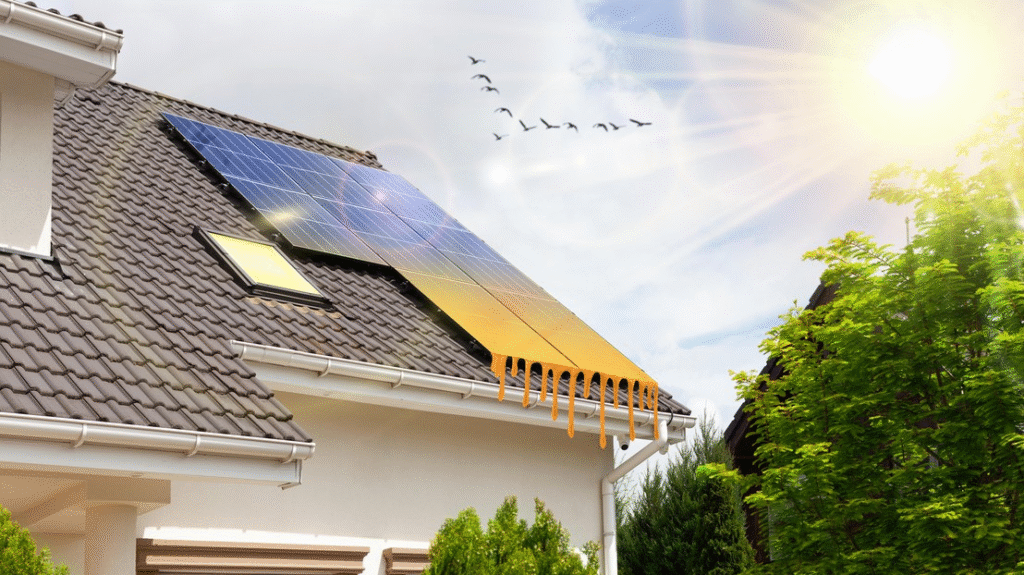
Choosing the right roof isn’t just about looks or durability — it’s also about how well it works with solar. For Big Island homeowners, the roof plays a double role: protecting your home from Hawai‘i’s unique climate and serving as the foundation for your residential solar energy system.
From tile to metal to asphalt shingles, every roof type has its strengths and limitations when it comes to solar installation. Understanding how these materials perform under local weather conditions, their longevity, and their compatibility with solar panels can save you from costly surprises later.
In this guide, we’ll walk through the most common roof types on the Big Island, what factors to consider before going solar, and how to choose the best fit for your home and energy goals. Contact us today for a free solar consultation!
Why Does Your Roof Play a Big Role in Solar Success?
Before we get into specific roof types, it helps to understand why your roof matters so much for solar. Solar panels aren’t just placed anywhere — they rely on your roof’s condition, angle, and durability to perform at their best. A strong, well-suited roof ensures your system lasts for decades, saves you the most money, and avoids unexpected issues down the road.
A few key questions to keep in mind:
- How strong is my roof? Can it support the added weight of solar panels for 25 years or more without structural concerns?
- What’s the angle and direction of my roof? Does it allow your panels to catch enough sun throughout the day for optimal output?
- Is my roof in good shape? If it’s nearing the end of its life, it may be smarter to replace it before adding panels.
- Are there obstructions? Trees, chimneys, or nearby buildings could cast shade and impact performance.
By evaluating these points early, you’ll avoid costly surprises and make sure your solar investment pays off for the long term.
Popular Roof Types for Solar Installations on the Big Island
On the Big Island, homeowners use a variety of roofing materials — from asphalt shingles and standing seam metal to clay tiles and flat concrete surfaces. Each roof type has its own strengths and considerations when it comes to solar. Some offer easy, low-cost installation, while others may need extra care or custom mounting solutions. Here are the main types;
1. Asphalt Shingle Roofs
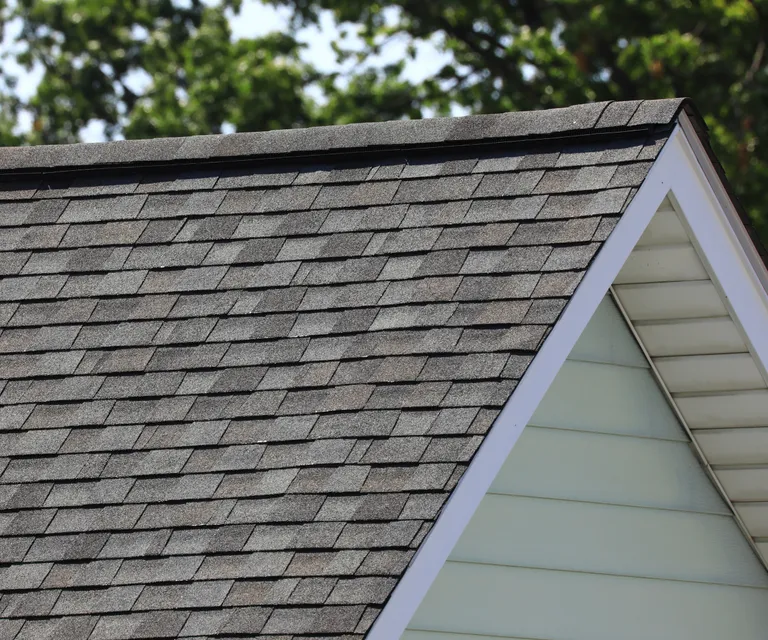
The most common roofing material across Hawai‘i, asphalt shingles are popular because they’re affordable and widely available. For solar, they’re one of the easiest roof types to work with. Installers can use standard mounting hardware to attach racking systems securely, which keeps installation costs lower compared to more complex roof types.
- Best for homeowners who want: cost-effective solar installation with simple upkeep.
- Things to watch: shingles generally last 15–20 years, which is shorter than the lifespan of solar panels. If your shingles are ageing, it’s often best to re-roof before installing solar so you don’t have to remove panels later.
2. Metal Roofs
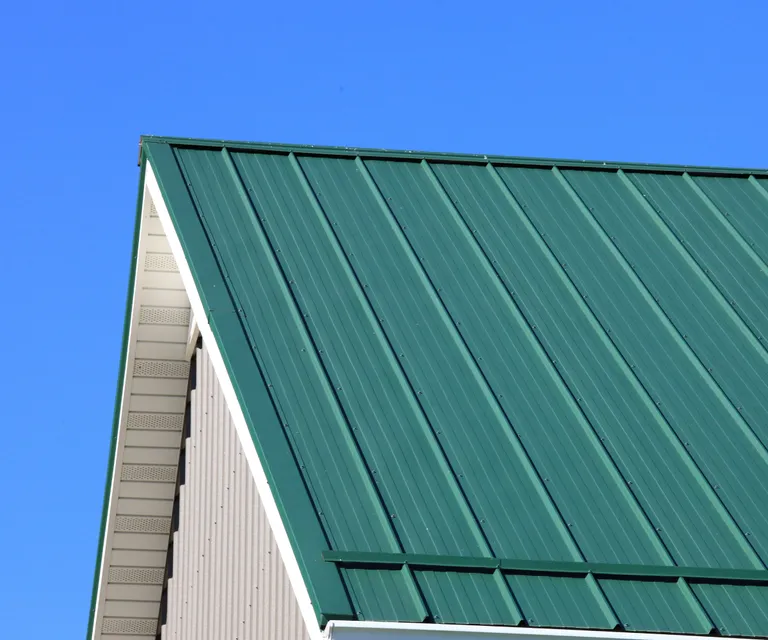
Metal roofs, especially standing seam designs, are growing in popularity on the Big Island. They’re incredibly durable, resist salt air corrosion, and can easily last 40–70 years. For solar, they’re one of the best matches — installers often clamp panels directly to seams, meaning fewer roof penetrations and lower risk of leaks.
- Best for homeowners who want: long-term reliability, energy efficiency, and low-maintenance solar.
- Things to watch: initial roof cost is higher than shingles, but the long lifespan makes it one of the most solar-friendly options in Hawai‘i.
3. Tile Roofs
Tile roofs — whether clay or concrete — are prized for their beauty and ability to withstand tropical weather. They’re common traditional or Mediterranean-style homes in Hawai‘i. Solar can be installed successfully on tile, but it takes more care. Installers may need to remove and replace tiles or use special mounting hardware to avoid breakage.
- Best for homeowners who want: a stylish, durable roof that holds up well in coastal conditions.
- Things to watch: installation is more labour-intensive, which can increase project costs compared to shingle or metal roofs.
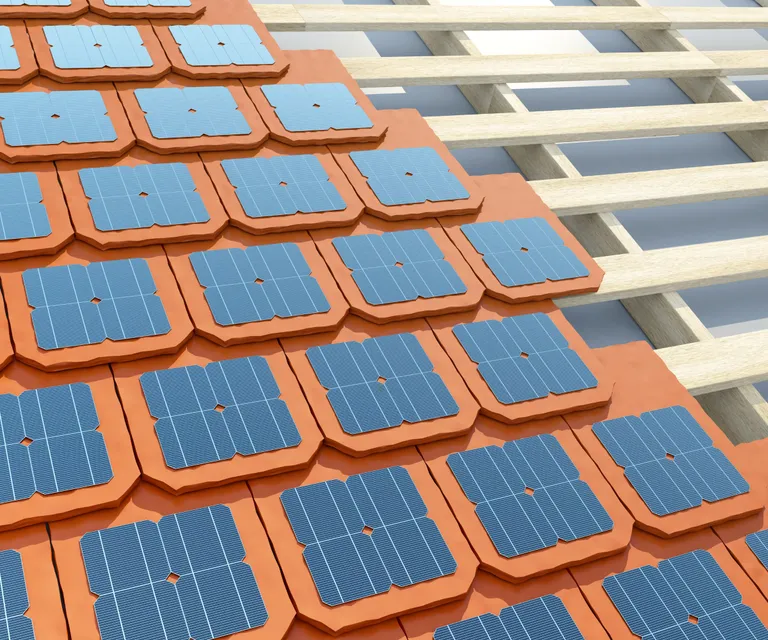
4. Flat Roofs
Many modern homes on the Big Island feature flat or low-slope roofs. With solar, this can be an advantage — racking systems allow panels to be tilted at just the right angle to capture the sun. Flat roofs also make maintenance easier since panels are more accessible.
- Best for homeowners who want: flexibility in solar panel placement and clean, modern roof lines.
- Things to watch: flat roofs need proper drainage so rainwater doesn’t pool under the racking system, which could cause long-term issues.
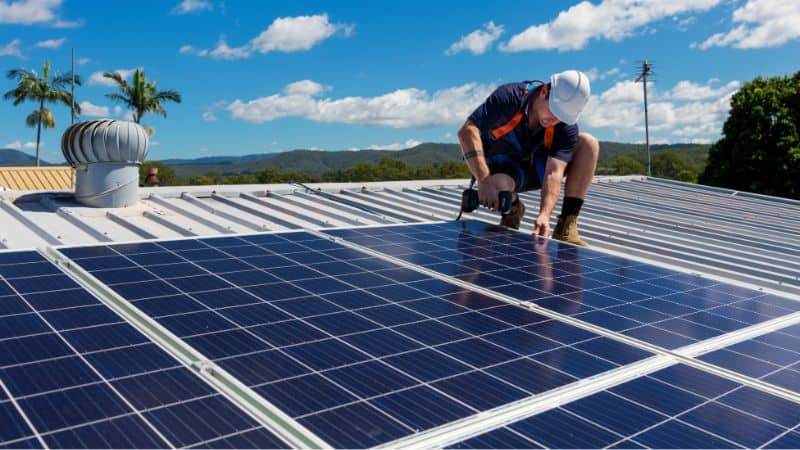
Preparing Your Roof for Solar: Factors Influencing Roof Selection
Not all roofs are created equal when it comes to solar. The type of roof that works best for you depends on several factors unique to your home and lifestyle. Here’s what we look at when guiding Big Island homeowners through their solar choices:
- Roof Age & Condition
A roof that’s near the end of its life may need repairs or replacement before solar panels can be safely installed. Starting fresh ensures your system will last its full 25+ year lifespan without interruptions.
- Available Space
The amount of open roof space — free from vents, skylights, or chimneys — directly affects how many panels can be installed. Larger roofs offer more flexibility, while smaller ones may require higher-efficiency panels.
- Roof Pitch & Orientation
Steeper roofs or those facing south often capture sunlight more effectively. East- or west-facing roofs still work well, but may slightly reduce your total output unless optimised during design.
- Local Climate Conditions
On the Big Island, heavy rains, high winds, and salty air near the coast all influence roof durability. Certain roof types, like metal, stand up better to these conditions and may reduce long-term maintenance costs.
- Aesthetic Preferences
Some homeowners want solar panels to blend seamlessly with their roof style, while others prioritise maximum energy savings. The right roof type can help you achieve both.
By evaluating these factors, you’ll have a clearer idea of whether your roof is solar-ready or if alternatives like ground-mounted systems might be a better fit.
Why Big Island Homeowners Choose BlueSky Energy Hawaii?
Going solar in Hawai‘i comes with unique challenges, from salty air to local permitting rules. Since 2014, BlueSky Energy Hawaii has helped Big Island homeowners with custom solar systems designed for maximum savings and long-term reliability.
What makes us different is our honest, no-pressure approach. With deep local knowledge, we design systems built for Hawai‘i’s climate, and our support doesn’t stop at installation — we’re here to keep your system performing year after year.
Take the Next Step
Wondering if your Big Island roof is ready for solar? Schedule a free consultation with BlueSky Energy Hawaii. We’ll inspect your roof, review your energy needs, and design a solar system that saves you money while maximizing efficiency. Don’t wait — your ideal solar solution starts here!
FAQs
Can solar panels be installed on any type of roof in Hawai‘i?
Almost every roof type can support solar, from asphalt shingles to metal, tile, and flat roofs. The installation process just varies — some roof types are quicker and more affordable to work with, while others may need extra care or equipment.
Do I need to replace my roof before going solar?
If your roof is nearing the end of its lifespan, it’s best to replace it before installing solar panels. Panels can last 25+ years, so pairing them with a new or strong roof ensures you won’t have to remove and reinstall them later.
Which roof type is the easiest for solar panel installation?
Standing seam metal roofs are often the easiest because panels can be clamped onto the seams without drilling. Asphalt shingles are also straightforward and cost-effective for most Big Island homes.
Are tile roofs good for solar panels?
Yes, tile roofs can support solar, but installation requires special care to avoid damage. Experienced installers like the BlueSky Energy Hawaii team use methods designed for Hawai‘i homes to keep your roof protected while maximising solar output.
What if my roof isn’t a good fit for solar panels?
If your roof has shading issues, limited space, or isn’t in the right condition, ground-mounted solar is a great alternative. Many Big Island homeowners choose this option if they have open yard space.




Recent Comments